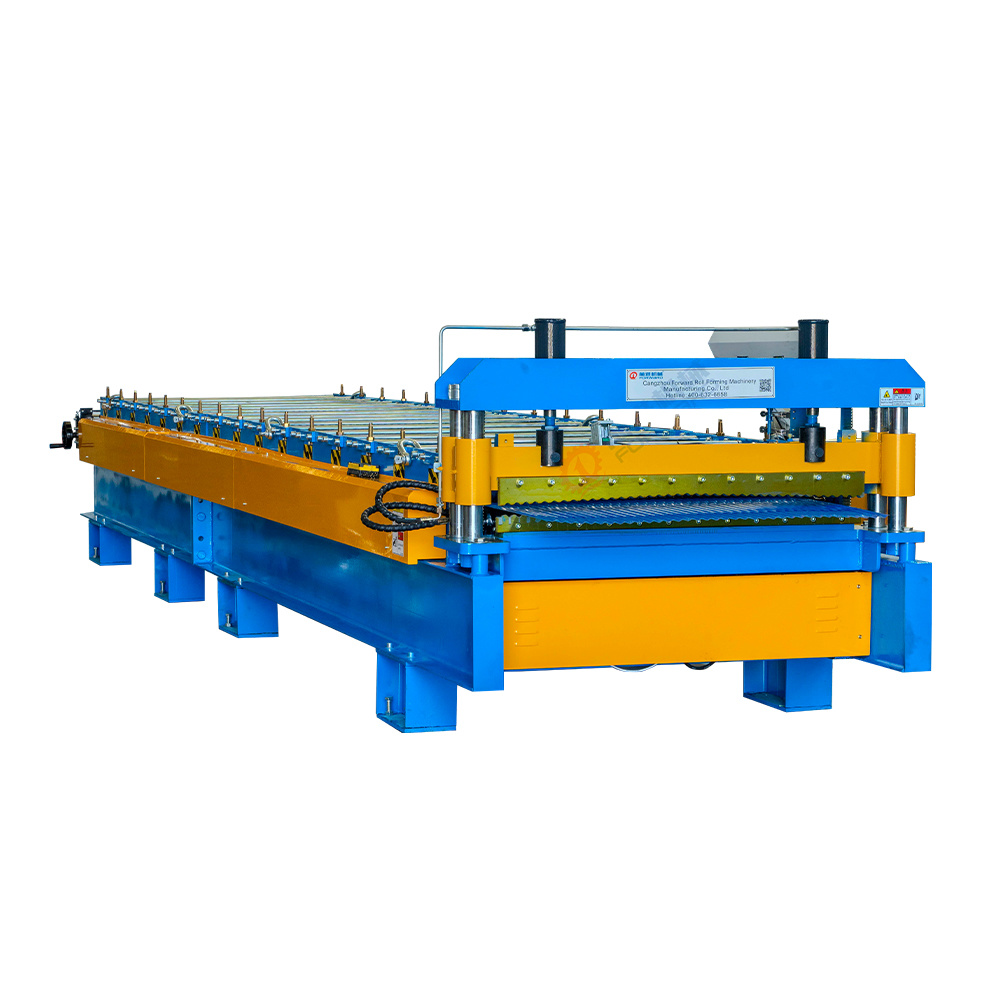How to Maintain Your Steel Frame Roll Forming Machine Effectively for Longevity and Performance

How to Maintain Your Steel Frame Roll Forming Machine Effectively
Table of Contents
- Introduction to Steel Frame Roll Forming Machines
- Importance of Regular Maintenance
- Daily Maintenance Checks
- Weekly Maintenance Tasks
- Monthly Maintenance Procedures
- Common Issues and Solutions
- Advanced Maintenance Tips for Operators
- Conclusion
- Frequently Asked Questions
Introduction to Steel Frame Roll Forming Machines
Steel frame roll forming machines are crucial in manufacturing various components in the construction and automotive industries. These machines shape steel sheets into specific profiles through a continuous bending process. Proper maintenance of these machines ensures they operate efficiently, reducing downtime and extending their lifecycle. Understanding the intricacies of maintenance can significantly influence productivity and cost-effectiveness.
Importance of Regular Maintenance
Regular maintenance is essential for several reasons:
1. **Preventive Care**: Routine checks help identify potential issues before they escalate into significant problems, saving time and repair costs down the line.
2. **Extended Machinery Lifespan**: Regular maintenance can prolong the operational life of your roll forming machine, protecting your investment.
3. **Optimized Performance**: Well-maintained machines operate more efficiently, producing higher-quality products with reduced waste.
4. **Safety Assurance**: Regular inspections ensure that safety mechanisms are functional, protecting operators and reducing the risk of accidents.
Daily Maintenance Checks
Daily maintenance checks are vital for ensuring the machine runs smoothly. Here’s a comprehensive list of tasks to perform each day:
1. Visual Inspection
Conduct a thorough visual inspection of the machine. Look for any signs of wear, unusual vibrations, or leaks. Pay attention to the following components:
- Rollers: Check for signs of wear and ensure they are aligned correctly.
- Bearings: Inspect for wear and ensure they are well-lubricated.
- Belts: Examine belts for fraying or excessive wear.
2. Lubrication
Proper lubrication reduces friction and wear on moving parts. Ensure all lubrication points are filled with the appropriate lubricant, following the manufacturer's specifications.
3. Cleanliness
Keep the machine clean from dust, debris, and metal shavings. Use a brush or vacuum to remove any buildup that may affect performance.
4. Safety Checks
Verify that all safety devices are functional. This includes emergency stop buttons and protective covers. Ensure that operators are familiar with safety protocols and equipment.
Weekly Maintenance Tasks
Weekly maintenance tasks are more in-depth and should include:
1. Calibration
Ensure that the machine is calibrated correctly for precision work. Check the alignment of rollers and adjust as necessary. Proper calibration guarantees that the products meet specifications.
2. Electrical System Inspection
Inspect the electrical components, including wiring, connectors, and control systems. Look for signs of wear or damage. Ensure that connections are secure and free from corrosion.
3. Hydraulic System Check
For machines with hydraulic components, inspect fluid levels and check for leaks in hoses and connections. Replace hydraulic fluid as recommended by the manufacturer.
4. Torque Checks
Ensure all bolts and screws are properly torqued to manufacturer specifications. Loose connections can lead to misalignment and increased wear.
Monthly Maintenance Procedures
Monthly maintenance involves more extensive checks and adjustments:
1. Detailed Inspection
Conduct a detailed inspection of all components, including the foundation and mounting. Look for any structural issues that may need addressing.
2. Gear and Chain Maintenance
Inspect gears and chains for wear and adjust tension as necessary. Replace any components that show signs of excessive wear.
3. Comprehensive Cleaning
Perform a deep cleaning of the machine, including removing covers and cleaning internal components. This helps prevent buildup that could affect performance.
4. Review Maintenance Logs
Review and update maintenance logs, ensuring all tasks are documented. This practice helps track the machine's history and identify trends over time.
Common Issues and Solutions
Understanding common issues can help troubleshoot problems quickly:
1. Misalignment of Rollers
**Issue**: Misalignment can lead to product defects.
**Solution**: Regularly check and adjust roller alignment. Use a level to ensure rollers are positioned correctly.
2. Overheating
**Issue**: Excessive heat can be a sign of insufficient lubrication or overloaded machinery.
**Solution**: Ensure that lubrication is adequate and that the machine is not overloaded beyond its capacity.
3. Poor Product Quality
**Issue**: Inconsistent product quality can result from machine adjustments or wear.
**Solution**: Regularly calibrate the machine and inspect for worn-out components that may affect product quality.
4. Noise Issues
**Issue**: Unusual noises may indicate mechanical problems.
**Solution**: Investigate the source of the noise, checking for loose parts, worn bearings, or insufficient lubrication.
Advanced Maintenance Tips for Operators
For those looking to take their maintenance practices to the next level, consider the following advanced tips:
1. Implement Condition Monitoring
Utilize condition monitoring tools to track machine performance metrics like vibration and temperature, allowing for predictive maintenance.
2. Schedule Downtime for Major Repairs
Plan for scheduled downtime to perform significant repairs and upgrades. This minimizes disruption to production while ensuring thorough maintenance.
3. Train Operators Regularly
Regular training for operators on maintenance best practices ensures everyone is well-equipped to handle routine checks and understand the importance of maintenance.
4. Utilize Original Equipment Manufacturer (OEM) Parts
When replacing components, always opt for OEM parts to ensure compatibility and reliability.
Conclusion
Maintaining your steel frame roll forming machine effectively is crucial for ensuring its operational longevity and performance. By adhering to a comprehensive maintenance schedule that includes daily checks, weekly tasks, and monthly procedures, you can prevent issues and optimize productivity. The knowledge and practices shared in this guide are designed to empower operators and technicians alike, fostering a culture of maintenance excellence in your facility.
Frequently Asked Questions
1. How often should I perform maintenance on my roll forming machine?
Regular maintenance should be performed daily, with more comprehensive checks weekly and monthly.
2. What are the most common signs of wear on a roll forming machine?
Common signs include unusual noises, overheating, misalignment of rollers, and poor product quality.
3. Can I perform maintenance tasks on my own, or should I hire a technician?
Many routine maintenance tasks can be performed by operators. However, complex repairs may require a qualified technician.
4. What types of lubricants should I use for my machine?
Always refer to the manufacturer’s specifications for the recommended types of lubricants and their application points.
5. How can I improve the efficiency of my roll forming machine?
Regular maintenance, proper calibration, and operator training can significantly enhance the efficiency of your machine.
Key words:
recommend News
Share



